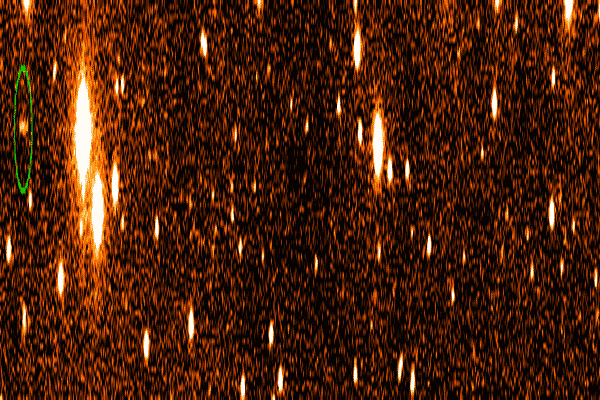
|
Credit: LONEOS,
Lowell Observatory
Explanation:
Why didn't we see it?
An undetected asteroid zipped past the
Earth undetected last month in the
closest near miss yet recorded --
within a quarter of the distance to the Moon.
Such a close call
is actually quite common --
what was new was that we did see it, although the
detection occurred hours after it happened.
In fact, a rock this size strikes the Earth
roughly once a year and smaller rocks
strike the Earth daily.
The global danger
from the bus-sized space rock was minimal.
Robert Cash of
Minor Planet Research Inc. discovered
asteroid
2003 SQ222 in data from the sky-scanning
Lowell Observatory Near Earth Object Search (LONEOS).
Pictured above is the discovery image sequence of SQ222,
shown stretched vertically to be more easily viewable.
Objects like SQ222 are hard to
detect because they are
so faint and move
so fast.
An ability to scan the sky to detect, catalog,
and analyze such objects has been
increasing notably in
recent years.
|
January February March April May June July August September October November December |
| ||||||||||||||||||||||||||||||||||||||||||||||||
NASA Web Site Statements, Warnings, and Disclaimers
NASA Official: Jay Norris. Specific rights apply.
A service of: LHEA at NASA / GSFC
& Michigan Tech. U.
Based on Astronomy Picture
Of the Day
